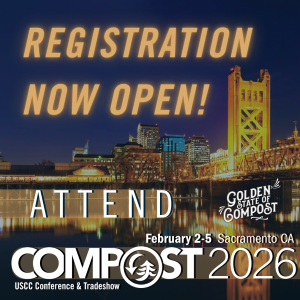p.14
METHODS AND ECONOMICS OF RECYCLING SEAFOOD PROCESSING WASTES
Q: We have a seafood residuals composting facility in Alaska and are interested in new business opportunities. Can you tell us who else is in the seafood waste recycling business – making bioproducts that range from compost and natural polymers to fish protein and meal?
A: Facilities that process fish, crab and shrimp generate up to 85 percent or more of their harvest as waste that requires disposal – or utilization. In a recent conversation, Bob Mills – compost manager of Totem Soils in Kake, Alaska – asked us for examples of other facilities that are turning seafood residues into compost or other bioproducts. As he said in an article on Totem Soils in BioCycle (“Alaskan Tribal Community Creates Quality Compost,” April 2004), “For centuries, our ancestors put fish and seaweed in their gardens. Everyone composted, but no one knew we could make money at it.” Over the years, there have been many examples of research studies and start-up enterprises focused on creating profitable by-products from fish processing operations. The following is a small sample of what’s been done.
Navigating Fisheries By-Products (or “Better Than Bait”)
Three years ago, a collaborative effort between Susan Goldhor of the Center for Regional Applied Studies (Cambridge, Massachusetts) and Elizabeth Sheehan of Coastal Enterprises, Inc. (Portland, Maine) led to a publication called Beyond Waste: Navigating Fisheries By-Products in the Northeast. A chapter on product listings included these examples: Chitin-chitosan – every shrimp, crab and lobster shell contains chitin as a major component; highest value uses are medical, for example for nonallergenic surgical sutures. In 1987, a company called Hosho-Somerset in Crisfield, Maryland explored such other uses as animal feed, pigments, flavorings and fragrances. Their first plant processed 12 tons of crab shells a day to produce one ton of chitin.
A report in a British magazine, New Scientist, said that chitin – converted to chitosan by heating it with sodium hydroxide – is being used effectively to purify wastewater by removing suspended solids. Chitosan is a good metal chelator too, and could be used to treat toxic or radioactive wastewater. Pharmaceutical companies could also use it in cosmetic products and to accelerate wound healing. The food industry is developing ways to apply the emulsifying properties of chitosan in foods like peanut butter and mayonnaise.
Compost And Fertilizer
Goldhor and Sheehan also included compost on their list of by-products. One example cited was Coast of Maine Organics which primarily composts salmon residuals and mussel culls in addition to other marine and agricultural by-products. They have converted these by-products into a line of compost based, premium priced products sold at lawn and garden centers.
Another example is New Earth Services, Inc. near Hurlock, Maryland. New Earth was founded by Pat Condon, who with the University of Maryland Cooperative Extension, developed a way to compost crab residuals into a compost product. At the time (1992), crab processing residuals had become a disposal problem on the Eastern Shore of Maryland. Its original product, Chesapeake Blue, is made from composted crab shells and wood chips. Chesapeake Green is specifically formulated for use on lawns and flower beds. It is blended from composted poultry litter, clam shells and wood chips. The company also markets a golf course blend.
Looking through older issues of BioCycle, we came across a low-input composting method for crab waste that was developed by Herb Brodie and Lew Carr of the University of Maryland – long-time compost researchers who worked with New Earth Services. The method was put to use by Andrew Tolley of Toddville Seafoods. Crab waste was mixed with pine sawdust as a bulking agent, turned twice in piles or covered bins, and used as low grade fertilizer. Meanwhile, in Canada, several companies with assistance from S.P. Mathur and other researchers at the Land Resource Research Centre in Ottawa composted finfish and shellfish wastes in windrows, both small and large-scale.
Recent issues of BioCycle have profiled such companies as Advanced Marine Technologies near New Bedford, Massachusetts, which developed an enzymatic cold digestion process to produce a high-grade fertilizer from gurry. Their product is organic Gem, an “organic biostimulant” with low odor that is absorbed to increase plant yield and pest resistance. Ten years ago, Advanced Hydrolyzing Systems, Inc. of Astoria, Oregon started making liquid fish fertilizers called Fish In Kelp as part of their Ocean Fresh Organics line. As described in a newspaper article, “fresh fish parts are dumped into a huge grinding machine that pulverized the fish into a solid with the consistency of hamburger. An enzyme is then added to the fish to break down the solid mass into a liquid.”
Dried Products/Meal
The rise of aquaculture dramatically changed the market for fish meals, note Goldhor and Sheehan. Methods are presented, and special drying machines are described as are examples of concentrated fish solubles. Often fish meal plants are owned by a consortium of processors.
The list goes on for potential by-products from seafood wastes, getting into pharmaceuticals, flavors, fish oils and leather. Send us your experiences in utilization and by-product marketing to include in a future report. E-mail: biocycle@jgpress.com.
June 15, 2004 | General










